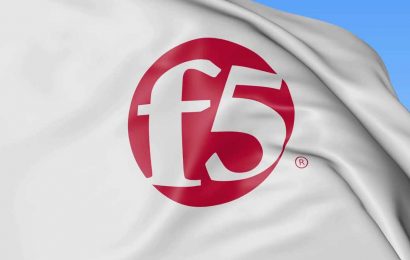- Lectures: 30
- Students: 89
Configuring BIG-IP ASM: Application Security Manager (WAF)
Course Description:
In this course, students are provided with a functional understanding of how to deploy, tune, and operate ASM to protect their web applications from HTTP-based attacks.
The course includes lecture, hands-on labs, and discussion about different ASM components for detecting and mitigating threats from multiple attack vectors such web scraping, Layer 7 Denial of Service, brute force, bots, code injection, and zero day exploits.
Prerequisites
There are no required F5 technology-specific prerequisites for this course. However, completing one the following before attending would be very helpful for students unfamiliar with BIG-IP:
- Administering BIG-IP
- F5 Certified BIG-IP Administrator
The course includes:
.11 hours on-demand Video [Total 17 Videos]
.Presentation files
.Step by step Lab workbook
TOPICS:
Module 1: Setting Up the BIG-IP System
- Packet Based Design Vs Full Proxy Architecture
- What’s inside a BIG IP system
- BIG-IP Platforms
- What’s outside a Hardware BIG IP system
- Initial BIG-IP setup
- Licensing, Provisioning and Network Configuration
Module 2: Traffic Processing with BIG-IP
- Identifying BIG-IP Traffic Processing Objects
- Overview of Network Packet Flow
- Understanding Profiles
- Overview of Local Traffic Policies
- Visualizing the HTTP Request Flow
Module 3: Web Application Concepts
- Overview of Web Application Request Processing
- Web Application Firewall: Layer 7 Protection
- ASM Layer 7 Security Checks
- Overview of Web Communication Elements
- Overview of the HTTP Request Structure
- Examining HTTP Responses
- How ASM Parses File Types, URLs, and Parameters
- Using the Fiddler HTTP Proxy
Module 4: Common Web Application Vulnerabilities
- Injection Attacks
- Parameter Tampering
- Hidden Field Manipulation
- Forceful Browsing
- Cross Site Scripting
Chapter 5: Security Policy Deployment
- Positive & Negative Security Models
- The Deployment Workflow
- Security Checks offered by Rapid Deployment
- Response Checks using Data Guard
Module 6: Policy Tuning and Violations
- Defining False Positives
- How Violations are Categorized
- Violation Rating: A Threat Scale
- Enforcement settings & Staging
Module 7: Attack Signatures
- Defining Attack Signatures
- Creating User-Defined Attack Signatures
- Defining Attack Signature Sets
- Understanding Attack Signatures and Staging
Module 8: Positive Security Policy Building
- Defining and Learning Security Policy Components
- Learning File Types , URLs and Parameters
- Choosing the Learning Scheme
Module 9: Cookies and Other Headers
- ASM Cookies: What to Enforce
- Enforce integrity of domain cookies
- Defining Allowed and Enforced Cookies
Module 10: User Roles and Policy Modification
- Defining user Roles
- Administrative Partitions
- Comparing Security Policies
- Editing and Exporting Security Policies
- ASM Deployment Types
Module 11: Reporting and Logging
- Reporting
- Logging and Viewing Logs
- Logging Profiles – Default & Custom
Module 12: Advanced Parameter Handling
- Defining Parameters types
- User-Input Parameters
- Defining static Parameters
- Defining Dynamic Parameters
- Dynamic parameter Extraction
Module 13: Using Application-Ready Templates
- Application Ready Templates
- Commonly used Templates
Module 14: Automatic Policy Building
- Overview of Automatic Policy Building
- Choosing policy types [Rapid, Fundamental and Comprehensive]
- Trusted and Untrusted IP Addresses
- Learning speed
- Learning Score
Module 15: Web Application Vulnerability Scanner Integration
- Overview
- Integrating ASM with Vulnerability scanner
- Resolving Vulnerabilities
Module 16: Layered Policies
- Overview of Layered Security Policies
- Parent and child security policy terminology
- Policy Section elements and settings
- Inheritance settings
Module 17: Login Enforcement and Session Tracking
- Defining Login URL
- Defining Session Tracking
- Session Hijacking Mitigation
- Fingerprinting Overview
- Partial List of what ASM can fingerprint
Module 18: Brute Force and Web Scraping Mitigation
- Defining Anomalies
- Mitigating Brute Force Attacks via Login Page
- Defining Session-Based Brute Force Protection
- Defining the Prevention Policy
- Mitigating Web Scraping
- Defining Geo location and IP address Exceptions
Module 19: Layer 7 DoS Mitigation and Advanced Bot Protection
- Defining Denial of Service Attacks
- Defining the DoS Profile
- Defining Mitigation Methods
- Using BOT Signatures
- Create a DoS Logging Profile
- Defining DoS Profile General Settings
- Defining Bot Signatures
- Defining Proactive Bot Defense
-
Module 0: Introduction - PREVIEW
-
Module 1: Setting Up the BIG-IP System
-
Lecture 2.1Setting up BIGIP System PART 136m
-
Lecture 2.2Setting up BIGIP System PART 220m
-
-
Module 2: Traffic Processing with BIG-IP
-
Lecture 3.1Traffic Processing with BIG-IP38m
-
-
Module 3: Web Application Concepts
-
Lecture 4.1Web Application Concepts – PART150m
-
Lecture 4.2Web Application Concepts – PART 212m
-
-
Module 4: Common Web Application Vulnerabilities - PREVIEW
-
Lecture 5.1Common Web Application Vulnerabilities – PART 124m
-
Lecture 5.2Common Web Application Vulnerabilities – PART 223m
-
-
Chapter 5: Security Policy Deployment
-
Lecture 6.1Security Policy Deployment – PART 119m
-
Lecture 6.2Security Policy Deployment – PART 228m
-
-
Module 6: Policy Tuning and Violations
-
Lecture 7.1Policy Tuning and Violations16m
-
-
Module 7: Attack Signatures
-
Lecture 8.1Attack Signatures – PART 111m
-
Lecture 8.2Attack Signatures – PART 212m
-
-
Module 8: Positive Security Policy Building
-
Lecture 9.1Positive Security Policy Building47m
-
-
Module 9: Cookies and Other Headers
-
Lecture 10.1Cookies and other Headers36m
-
-
Module 10: User Roles and Policy Modification
-
Lecture 11.1User Roles and Policy Modification38m
-
-
Module 11: Reporting and Logging
-
Lecture 12.1Reporting and Logging37m
-
-
Module 12: Advanced Parameter Handling
-
Lecture 13.1Advanced Parameter Handling38m
-
-
Module 13: Using Application-Ready Templates
-
Lecture 14.1Using Application Ready Templates12m
-
-
Module 14: Automatic Policy Building
-
Lecture 15.1Automatic Policy Building35m
-
-
Module 15: Web Application Vulnerability Scanner Integration
-
Lecture 16.1Web Application Vulnerability Scanner Integration4m
-
-
Module 16: Layered Policies
-
Lecture 17.1Layered Policies15m
-
-
Module 17: Login Enforcement and Session Tracking
-
Lecture 18.1Login Enforcement and session Tracking – PART 16m
-
Lecture 18.2Login Enforcement and session Tracking – PART 233m
-
-
Module 18: Brute Force and Web Scraping Mitigation
-
Lecture 19.1Brute Force and Web Scraping39m
-
-
Module 19: Layer 7 DoS Mitigation and Advanced Bot Protection
-
Lecture 20.1Layer 7 DoS Mitigation and Bot Protection14m
-
-
Module 20: Lab Materials - Lab Workbook,Software
-
Lecture 21.1Lab Workbook – Step by Step
-
Lecture 21.2Link to Download PHP Auction Web Application Server
-
-
Module 21: Presentation File
-
Lecture 22.1Presentation File
-
Reviews
-
f.bensalah@ucd.ac.ma
very good cours and LAB



